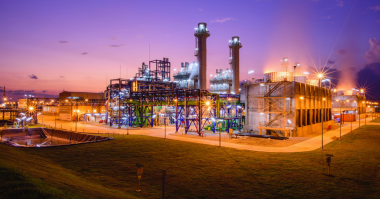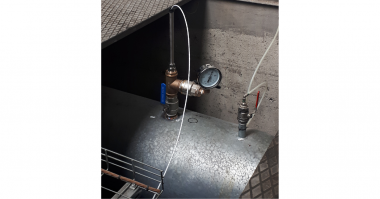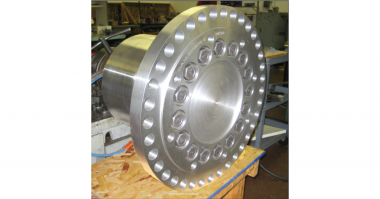Author: Robert X. Perez, Machinery Engineer
In the next 4 columns, I plan to take the reader through a brief overview of commonly used compressor designs and how they work. We will briefly touch on centrifugal, reciprocating, and screw compressor designs. By the end of this series, the reader should have a basic understanding of compressors and their terminology.
Compression Basics
Gases are fluids that take the shape of their container and are highly compressible when compared to liquids. Gases can be either pure or a composition of different gases with varying molecular weights. Given two equal volumes of gas at identical pressures and temperatures, the volume containing gases with a higher average molecular weight will have a higher density, which means it will have a greater mass per unit volume. We must know the volume, pressure, temperature, and composition of a gas to fully define its nature and condition.
A compressor is a fluid handling machine that takes in gas at a lower density and pressure via a suction nozzle and compresses it, resulting in the gas having a higher density and pressure in the discharge nozzle. Figure A demonstrates how compression works: It begins with a given starting volume of gas, as shown on the left in Figure A. The gas is squeezed into a smaller volume, as shown on the right. Notice that the starting volume of the gas has been reduced, while the number of molecules inside the container remains the same. A smaller volume with the same number of molecules means that density has increased. Compressors like centrifugal pumps have larger inlets than discharges making it easy to determine which is which.
The act of compression requires power, provided by drivers such as motors, steam turbines, and gas turbines, to push the molecules into a smaller volume. This, in turn, forces them closer together and pressure to increase. It is the higher pressure that pushes gas flow out of the compressor’s discharge nozzle into the process. In addition to an increase in pressure, the act of compression causes the gas to heat up. The greater the level of compression, the higher the temperature increase you can expect.

Figure A – During the gas compression process, a volume of gas is decreased in order to increase its pressure as shown on the right.
Defining Gas Flow
One way that compressors are different than pumps is the way flow rates are expressed. Because liquids are essentially incompressible, there is no need to be concerned about the effect of pressure on the flow volume. 100 gallons per minute at 10 psi is essentially 100 gallons per minute at 500 psi. The same cannot be said about gases. Gases are compressible and the density of a gas is highly dependent on its pressure and temperature. Gas flow is expressed in one of two ways: 1) standard cubic feet per unit time or 2) actual cubic feet per unit time.
Standard cubic feet per minute (SCFM) is the flow-rate of a gas corrected to standard temperature and pressure. Expressing gas flow in terms of standard conditions is handy because the value is independent of temperature and pressure. Standard conditions are 14.7 psi (absolute) and 60o F. If we say we have 100 standard cubic feet of a gas it means that at 14.7 psia and 60o F we would expect to have 100 cubic feet of gas. In contrast, the term “actual cubic feet per minute” (ACFM) is used to express the volume of gas flowing anywhere in a system. If a system was moving a gas at exactly standard conditions, then ACFM would equal SCFM.

Figure B—Compressor Schematic
Figure B shows a gas compressor changing a gas stream from 100 psi to 200 psi. The larger input arrow on the left is meant to show that the actual cubic feet per minute is larger than the actual cubic feet per minute at the outlet conditions shown by the smaller arrow on the right. Even though the actual cubic feet per minute value is smaller on the right, the standard cubic feet per minute is the same at the inlet and outlet conditions. The lesson to remember here is that you need to understand which measurement units of the flow you are dealing with when examining compressor performance.
About the Author:
 Robert X. Perez has over 30 years of rotating equipment experience in the petrochemical industry. He earned a BSME degree from Texas A&M University (College Station), a MSME degree from the University of Texas at Austin, and is a licensed professional engineer in the state of Texas. Mr. Perez served as an adjunct professor at Texas A&M University-Corpus Christi, where he developed and taught the Engineering Technology Rotating Equipment course.
Robert X. Perez has over 30 years of rotating equipment experience in the petrochemical industry. He earned a BSME degree from Texas A&M University (College Station), a MSME degree from the University of Texas at Austin, and is a licensed professional engineer in the state of Texas. Mr. Perez served as an adjunct professor at Texas A&M University-Corpus Christi, where he developed and taught the Engineering Technology Rotating Equipment course.
He authored four books and coauthored four books in the field of machinery reliability. Mr. Perez has also written numerous machinery reliability articles for numerous technical conferences and magazines.





Comments